February 27, 2021
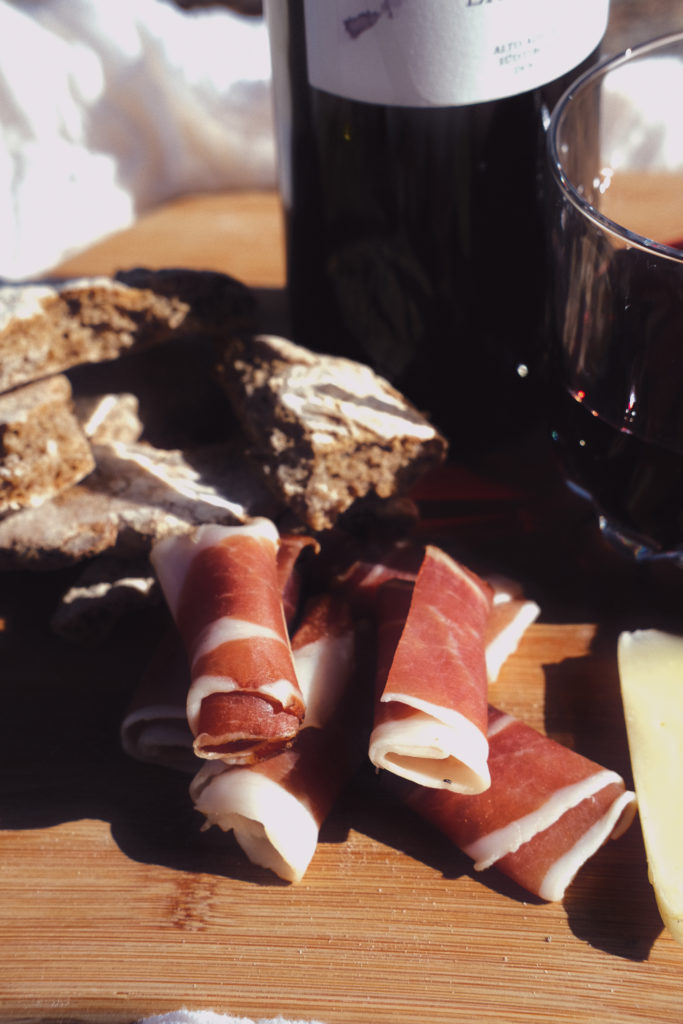
Tasting the regional specialties of Italy in their region of origin is one of my favorite things in the world, which can only be topped by tasting them straight from the source. In June 2019, I had that exact dream come true by visiting the Recla Speck production facilities in South Tyrol, Italy.
First, let’s take a look at the unique history, climate, and geography that have shaped Speck and other regional cuisine of South Tyrol.
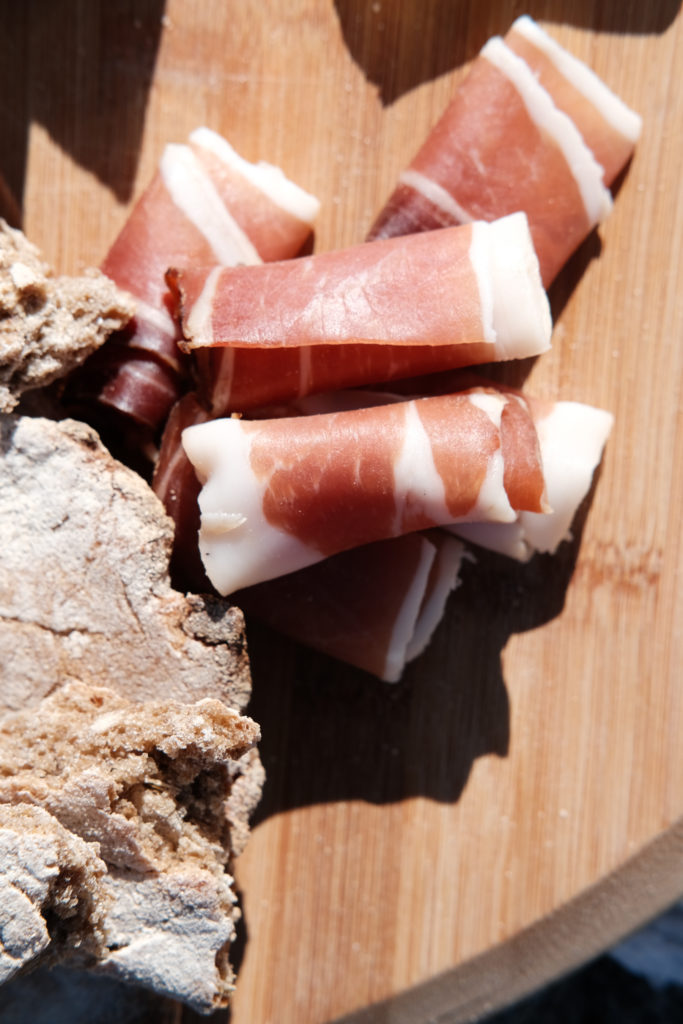
Alto Adige / Südtirol
It was my first time in South Tyrol, and the dramatic mountains and lush green valleys immediately drew me in. Like every region in Italy, South Tyrol has its own unique history that influences its cuisine.
Culture & history
Language
You might notice right off that this northern region of Italy has not one, but several names: Alto Adige in Italian, Südtirol in German, and South Tyrol in English.
Multilingualism is a way of life here. Everywhere you go, you’ll see multilingual signage (Italian, German and possibly even English). It is not uncommon to hear German spoken here, even though this is Italy. The indigenous language of South Tyrol, however, is called Ladin. Though only 4% of inhabitants in South Tyrol speak Ladin today, it is still an official language of the region, along with German and Italian. I was so impressed how effortlessly many locals switched amongst German, Italian, and even English.
Geography
This intersection of languages and culture reflects South Tyrol’s unique geographical location and history.
In Italian, alto means above, and Adige is the name of a river. It begins at the Austrian border, then traverses south through Bolzano and Verona and eastward until it meets the Adriatic Sea. Whereas the German moniker, Südtirol, refers to the historical region of Tyrol that extends in to Austria.
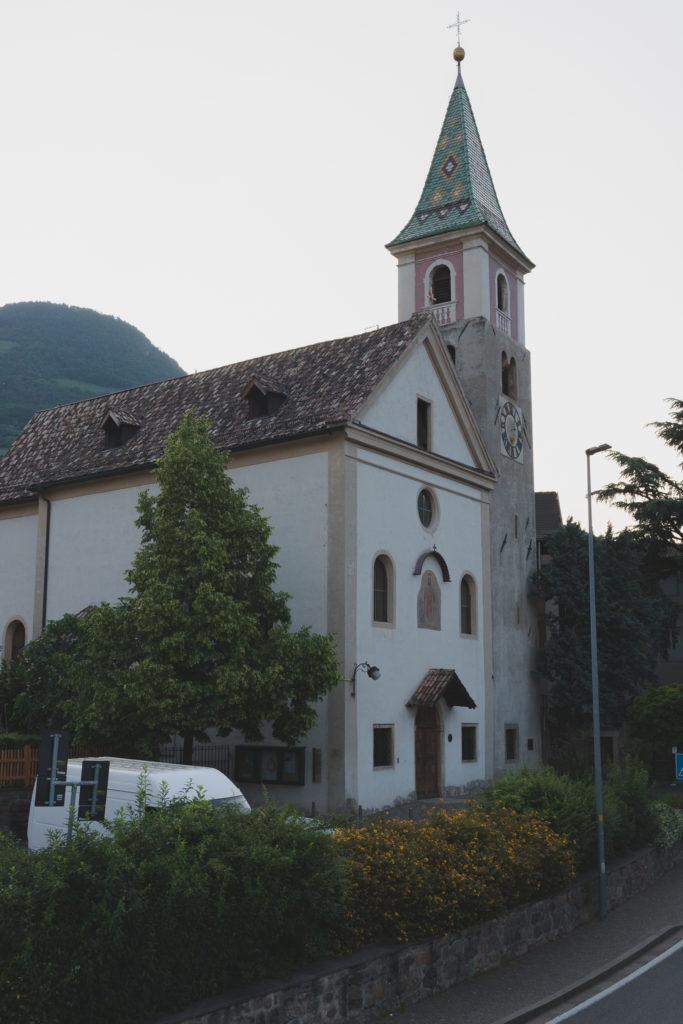
Austrian Heritage
The Austrian heritage of Alto Adige / Südtirol is a remnant of the Austro-Hungarian Empire. During WWI, formerly neutral Italy was promised Südtirol for joining the Allied forces in 1915. This annex would strategically provide Italy with access to the Alps.
Even though Alto Adige / Südtirol went through a period of forced Italianization under the Fascist leadership of Mussolini (read more about the fascinating history of Bolzano here), the Austrian heritage is still very much evident, from the mountain chalets dotting narrow verdant valleys ensconced in craggy peaks to the hearty mountain fare.
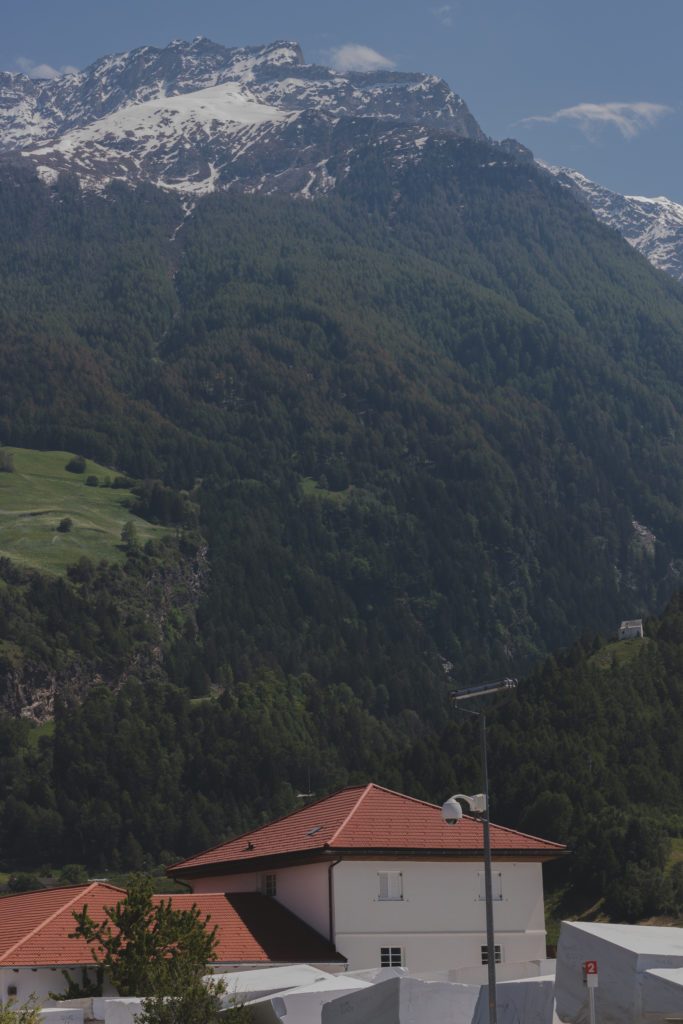
Climate & Terrain
Alto Adige/Sütirol is something from an Alpine fairytale. This region is located on the border of Austria at the intersection of the Alps and Dolomites. The jagged pinnacles of dolomite, the grayish-white rock that is the namesake of this mountain range, dominate over valleys of vineyards on gentle slopes and rows and rows of apple orchards.
The weather is extreme: cold, snowy winters, followed by hot summers. The cuisine reflects this heartiness and boldness. Full-bodied, yet vibrant wines, such as Lagrein, pungent cheeses, and a hearty smoked cured meat called Speck. These typical products of Alto Adige/Südtirol are unique expressions of terroir, highlighting the fresh Alpine air and woodsy notes.
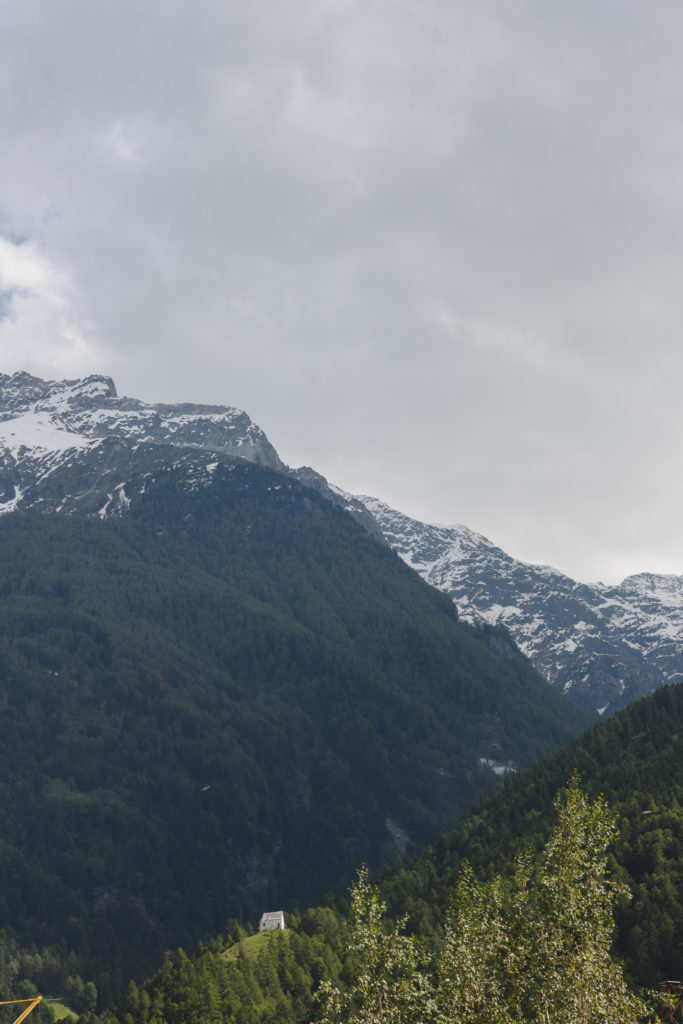
The typical products
There is definitely truth in the concept of “what grows together, goes together.” If you’d like the experience a taste of the mountains, put together a picnic or cheese board of these typical products of Alto Adige/Südtirol. The bold flavors of these typical products reflect the mountain extremes. There’s both the heartiness of the terrain, and the delicate crispness of the fresh mountain air.
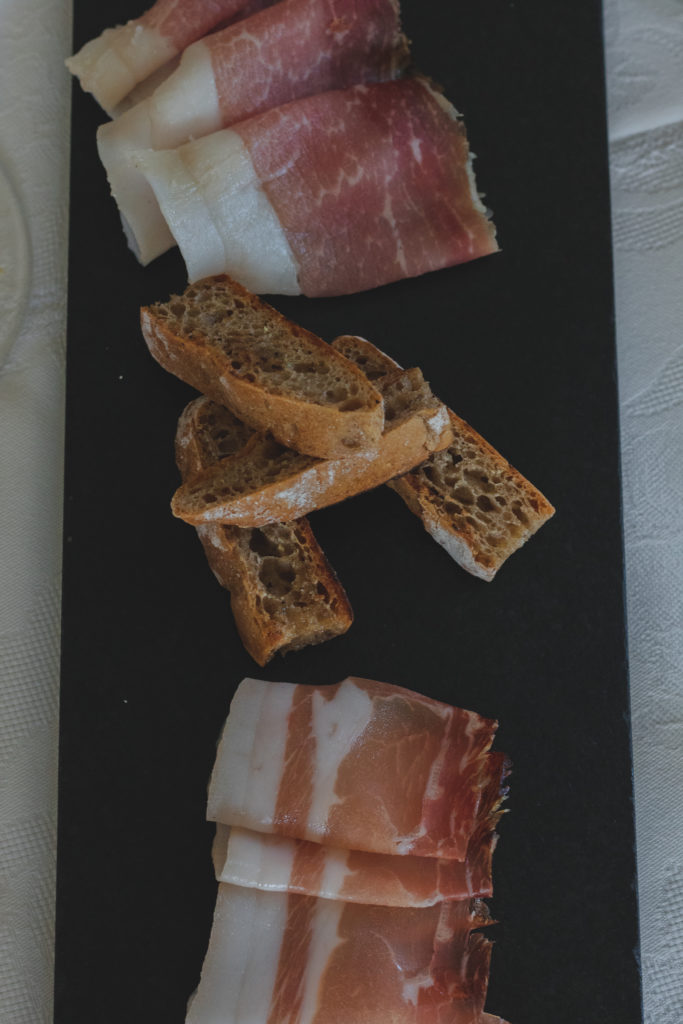
Speck Alto Adige PGI
What is Speck?
Speck is a traditional cured meat from the mountains of South Tyrol, Italy. It is unique because it combines two methods of preservation: smoking and curing. Speck has provided nutrients and energy required for a vigorous mountain lifestyle for generations, dating all the way back to the year 1200.
PGI status
European Union geographical indications protect traditional products that are unique to a certain region, much in the same way that copyright protects intellectual property. Speck is awarded the EU seal of PGI – Protected Geographical Indication (denoted by a blue and yellow seal on the packaging). PGI is reserved for typical products that have a significant historical and cultural significance tied to a specific region of origin.
PGI means that Speck must meet the following criteria:
- Speck is made with high-quality standards and traditional methods that reflect its historical place of origin (South Tyrol)
- The production phase takes place primarily in South Tyrol
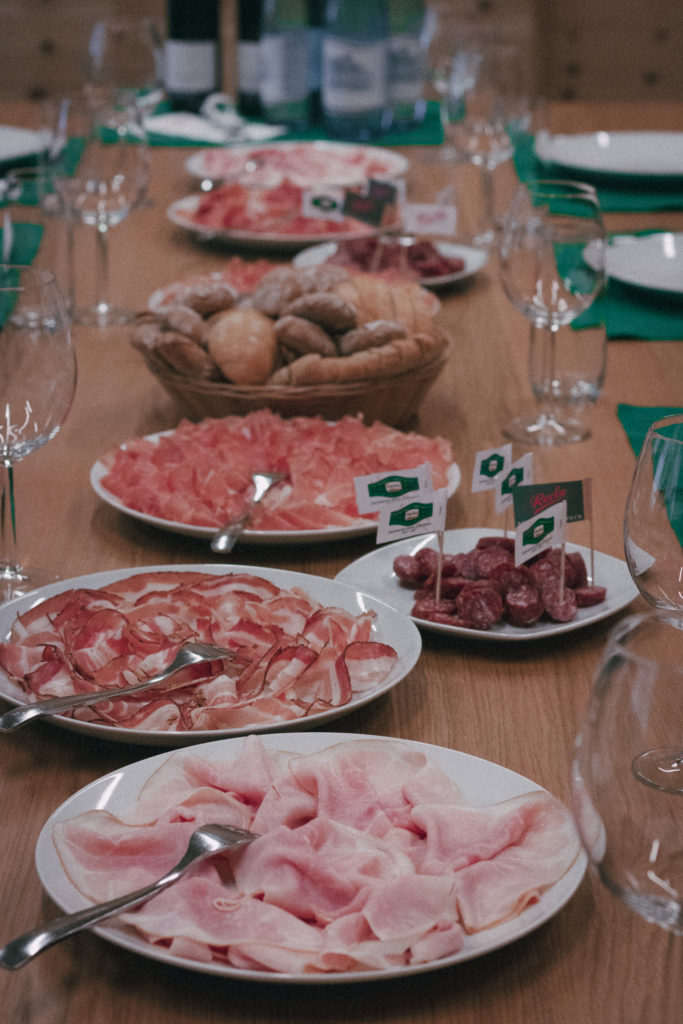
How Speck is Made
Tradition says that speck is made “with a little salt, a little smoke, and a lot of fresh air.” There are three phases in making speck:
- Seasoning: First, quality pork thighs seasoned for three weeks with a secret blend of spices and herbs, which may include salt, pepper, rosemary, bay leaves or juniper, etc.
- Smoking: After the pork has been seasoned, it is smoked at mild temperatures (20C/68F) for five days.
- Aging: Finally, speck is aged for twenty-two weeks in special rooms that are controlled for humidity and temperature and ventilated with fresh mountain air. Fun fact: the interior quality is checked by poking the Speck with a sharp piece of horse bone, an ago d’osso di cavallo in Italian. Horse bone doesn’t retain any scent, so just wipe it clean and continue the quality check on the next Speck!
The result of the lengthy production process is a delicately smoked and spiced cured ham that is still hearty and nutritious enough to sustain a strenuous mountain lifestyle. Speck has been a longtime favorite of mountaineers as an energy source and its high nutritional value.
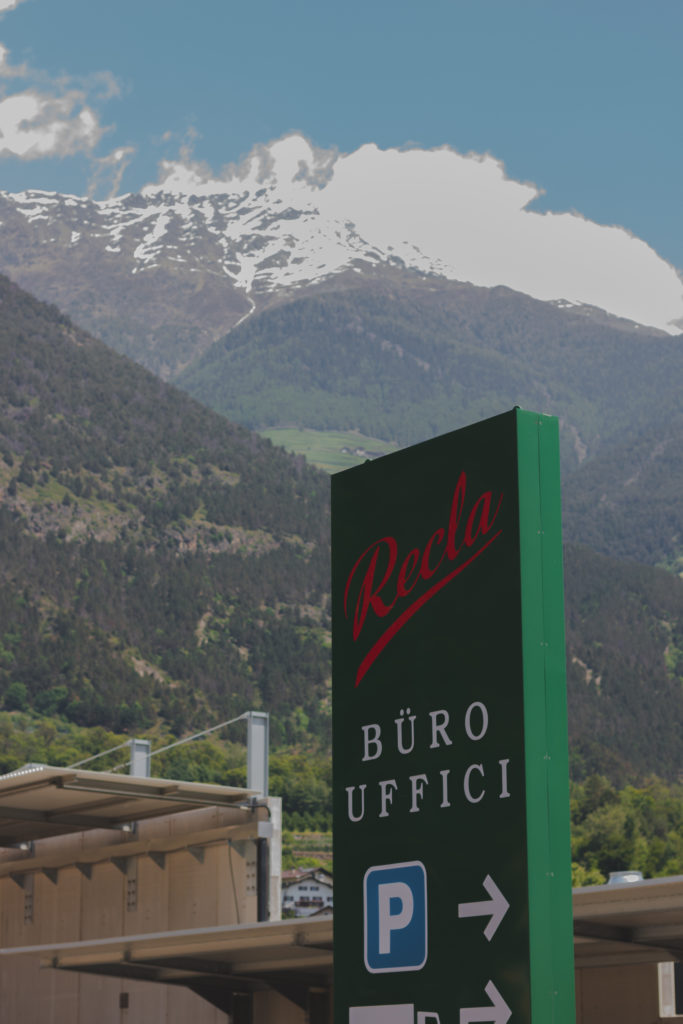
Recla Speck
The Recla family has been producing Speck since 1620, and today is one of the top exporters to the US. The facilities are located amongst the fresh mountain air not far from the city of Bolzano. In fact, the mountain air is one of the key components of Speck production during the curing process. Each producer has their own secret spice blend that is rubbed on the Speck for a unique touch.
How to serve Speck
Speck is a versatile ingredient and can be the main star of a dish or a garnish. Here are some suggestions:
- Enjoy a slice on its own! (Here’s how to cut speck)
- Serve speck on a cheese board or charcuterie platter
- In a sandwich
- As a garnish for risotto or pasta
- Make one of these recipes with speck as the star
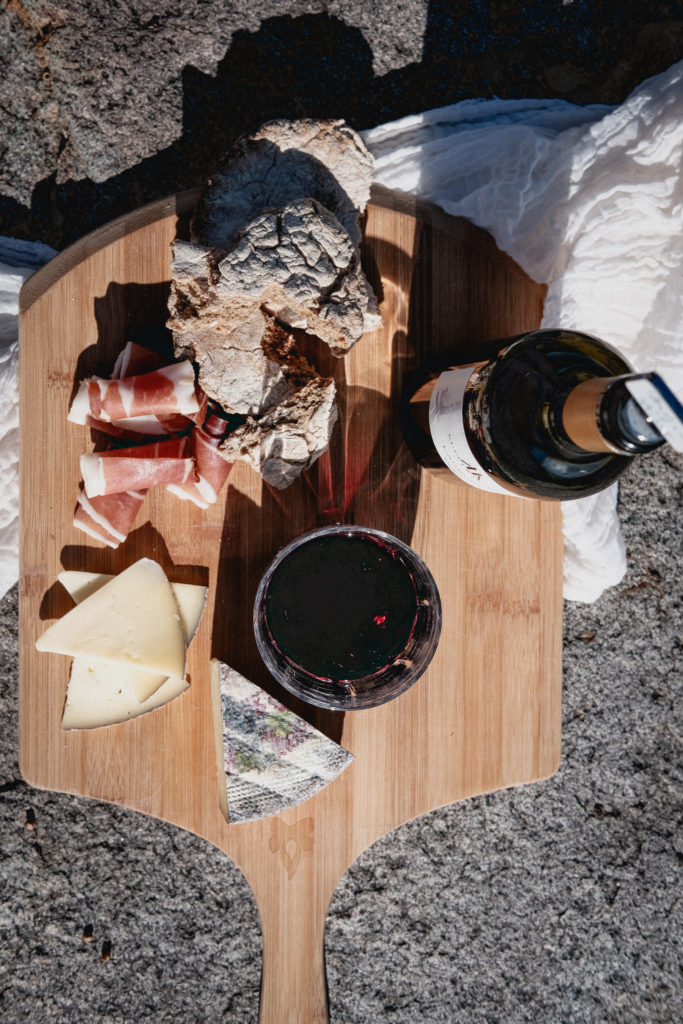
Speck Wine Pairing
Try Speck with a wine from the Alto Adige/Südtirol region:
- Schiava is the traditional wine pairing with Speck. This grape is native to South Tyrol and is “light-bodied with fruity strawberry and subtle smoky notes.”
- Lagrein is another grape native to South Tyrol. It fuller-bodied with velvety tannins with dark fruit and floral notes.
Lagrein (wine)
Lagrein is a bold red wine with a history and flavor profile that reflects the terroir of its homeland, South Tyrol.
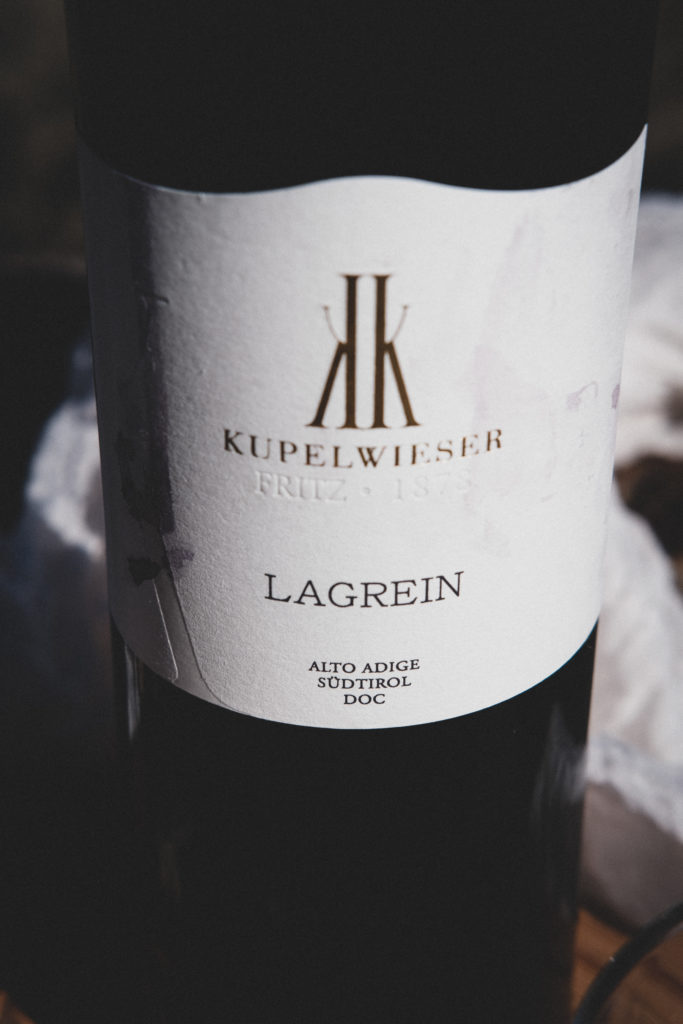
Production & history
Lagrein (Lagrein pronunciation) is a grape native to South Tyrol. It is more on the rare side, with only 1,203 acres (487 hectares) planted in the AltoAdige DOC in the vicinity of the city of Bolzano. It is a demanding grape, that producers jokingly admit “is a bit of a bastard to grow.” The reason for that is that the grapes need long hot summers to ripen properly, otherwise the tannins can be overpowering.
In fact, Lagrein almost died out in the 1970s. This is in part due to South Tyrol’s history. After becoming part of Italy post-WWI, South Tyrol was no longer able to export its wines to Germany, Austria, and Switzerland. The red wines of Alto Adige were not able to compete with the affordable reds available throughout Italy. This caused many to turn to apple growing instead, and in fact, you’ll see miles of apple groves throughout South Tyrol. Within the past few decades, there has been a renewed focus on producing quality wines from local grape varietals, such as Lagrein.
Watch the valiant effort of winemakers in Alto Adige/Südtirol in picturesque, yet demanding terrain in this amazing video.
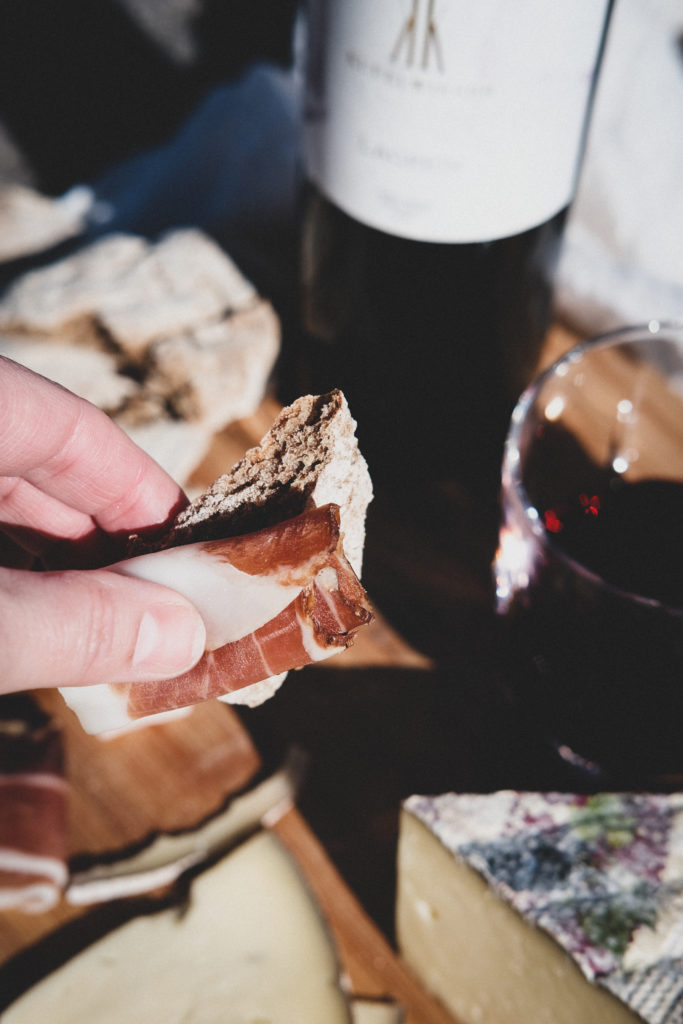
Other Speck Accompaniments
Lagrein Weinkase (cheese)
Lagrein Weinkase, translates to “wine cheese” in German. This pasteurized cow’s milk cheese is soaked in Lagrein wine, garlic, herbs, and pepper for five days. The result is semi-soft cheese with delicate holes with flavor notes similar to herbs and pepper in salami.
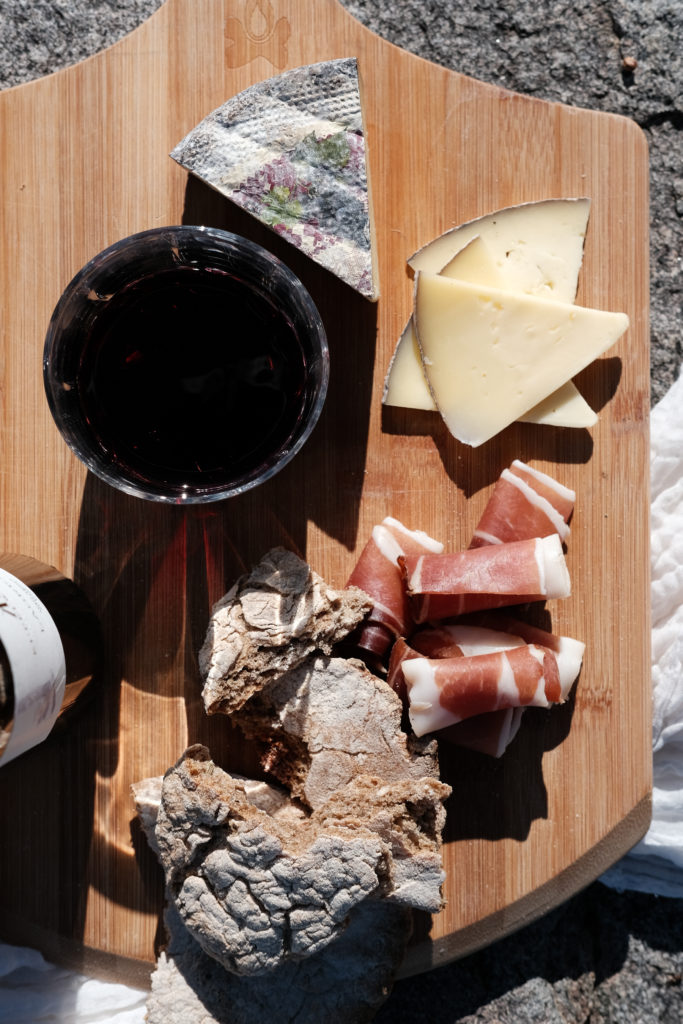
Schüttelbrot
Schüttelbrot (hear schüttelbrot pronunciation) is German for “shaken bread,” or pane scosso” in Italian). It is a flat, crunchy rye bread named after the technique in which it is made. The dough is shaped by shaking it against a board to create a flat disc.
You can see the technique of shaking the dough against a wooden board to form a flat disc in this video below.
Schüttelbrot goes perfectly with speck for a true South Tyrol snack.
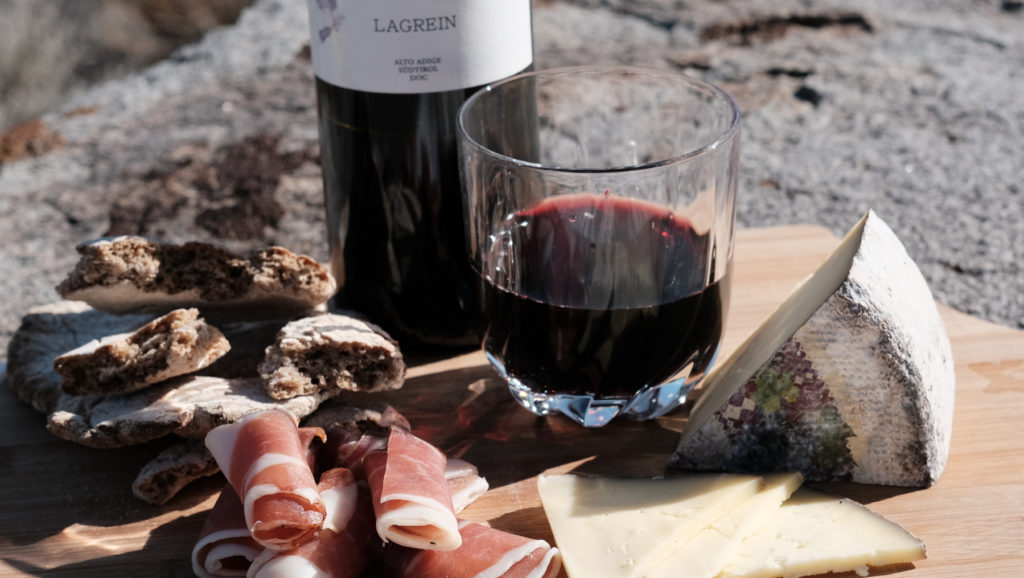
Learn more about Alto-Adige/Südtirol
My Dear Italia insightful article on the culture & history of Bolzano
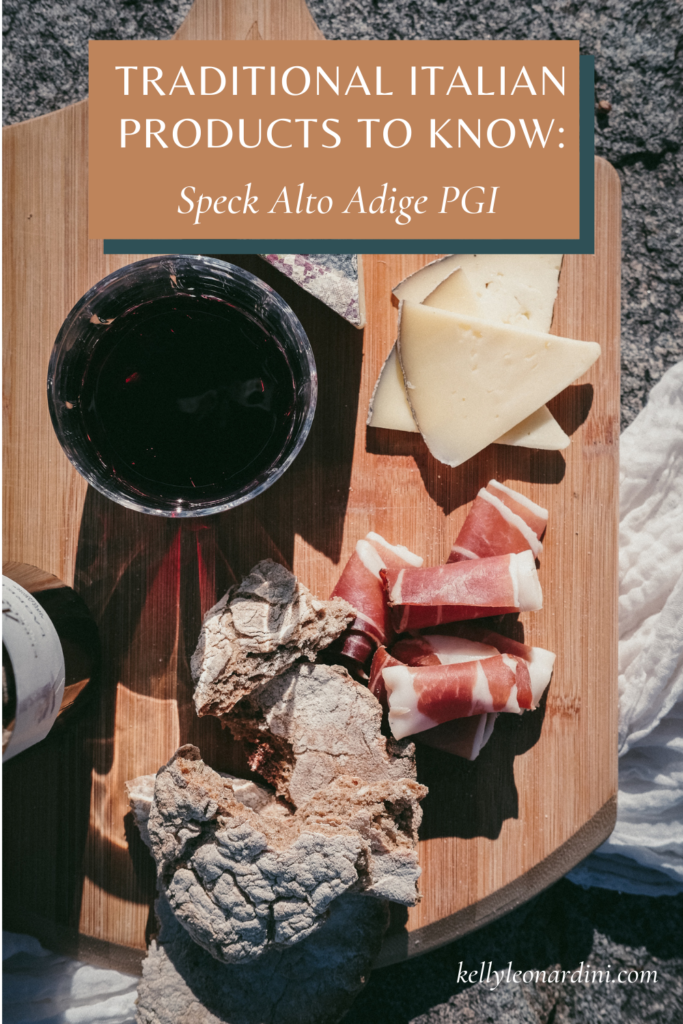
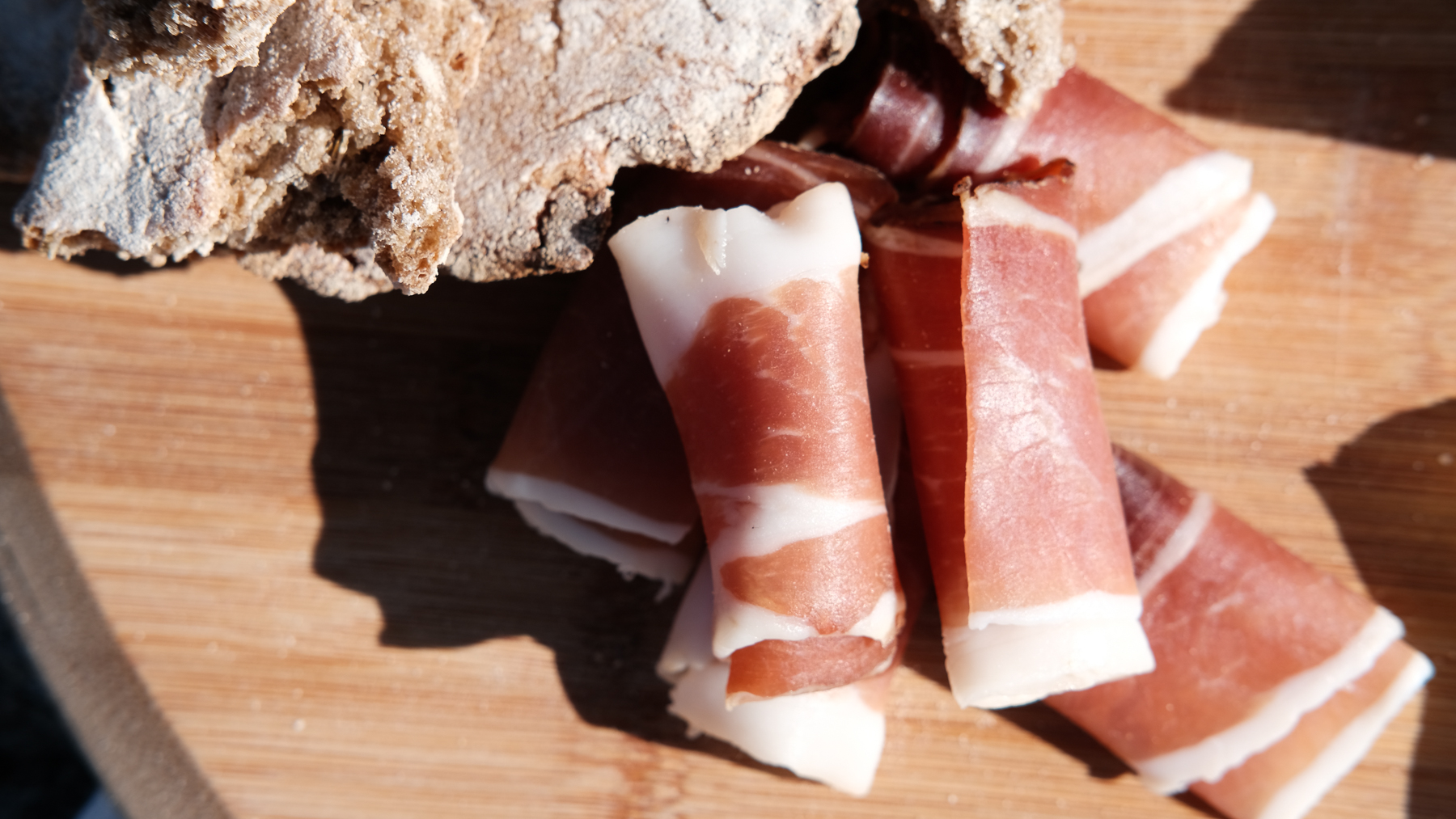
Comments